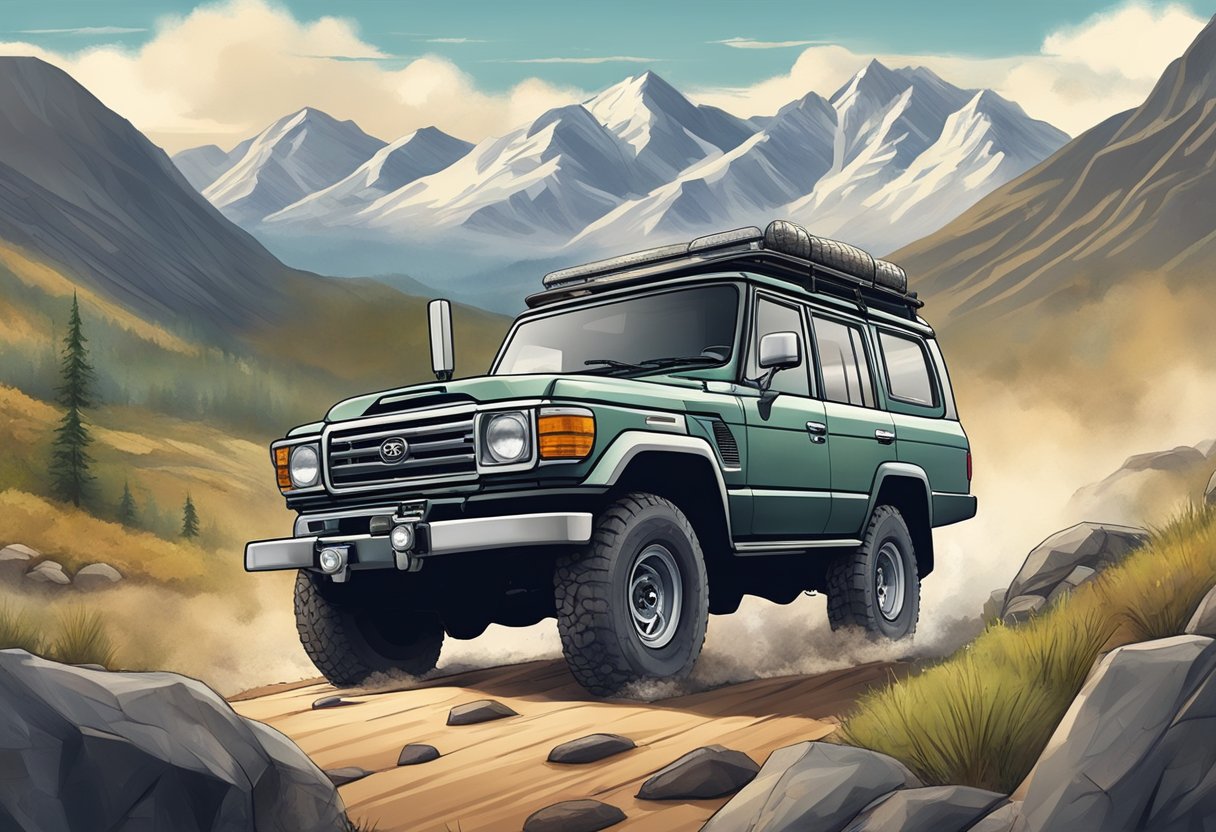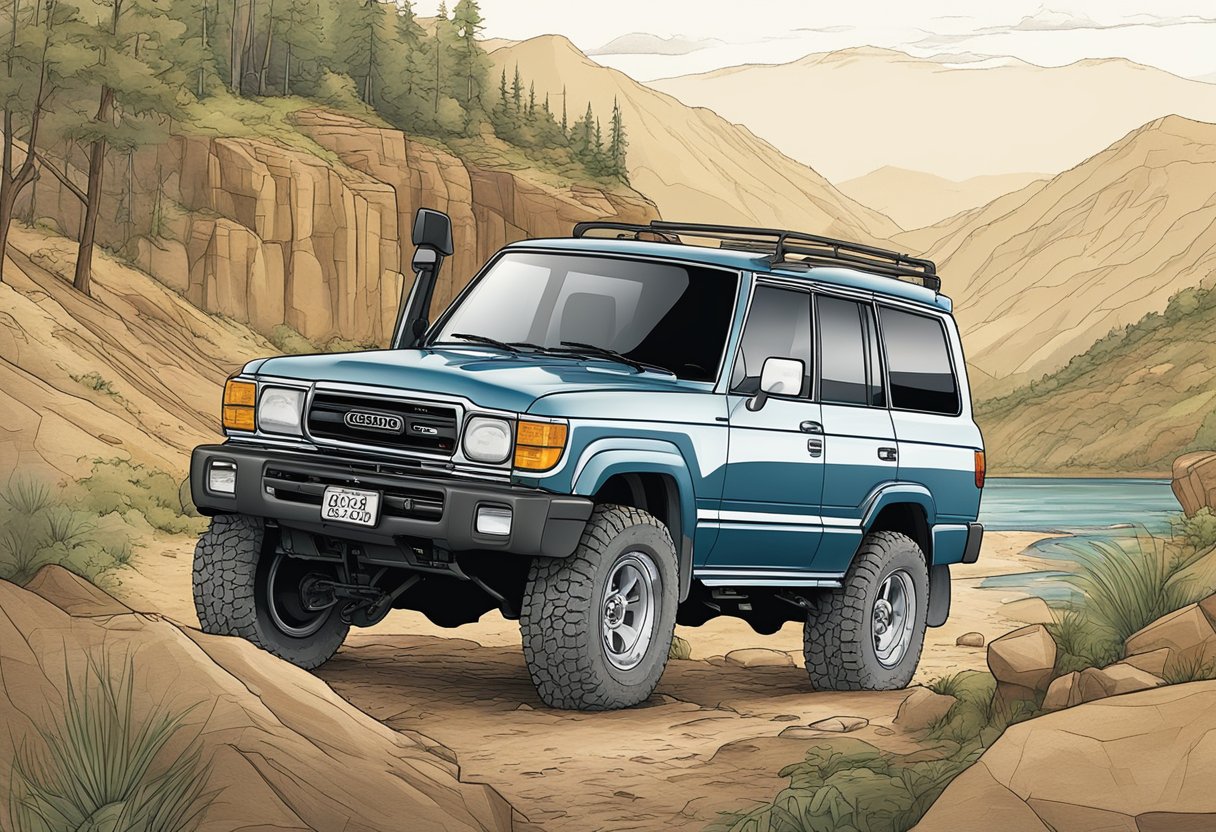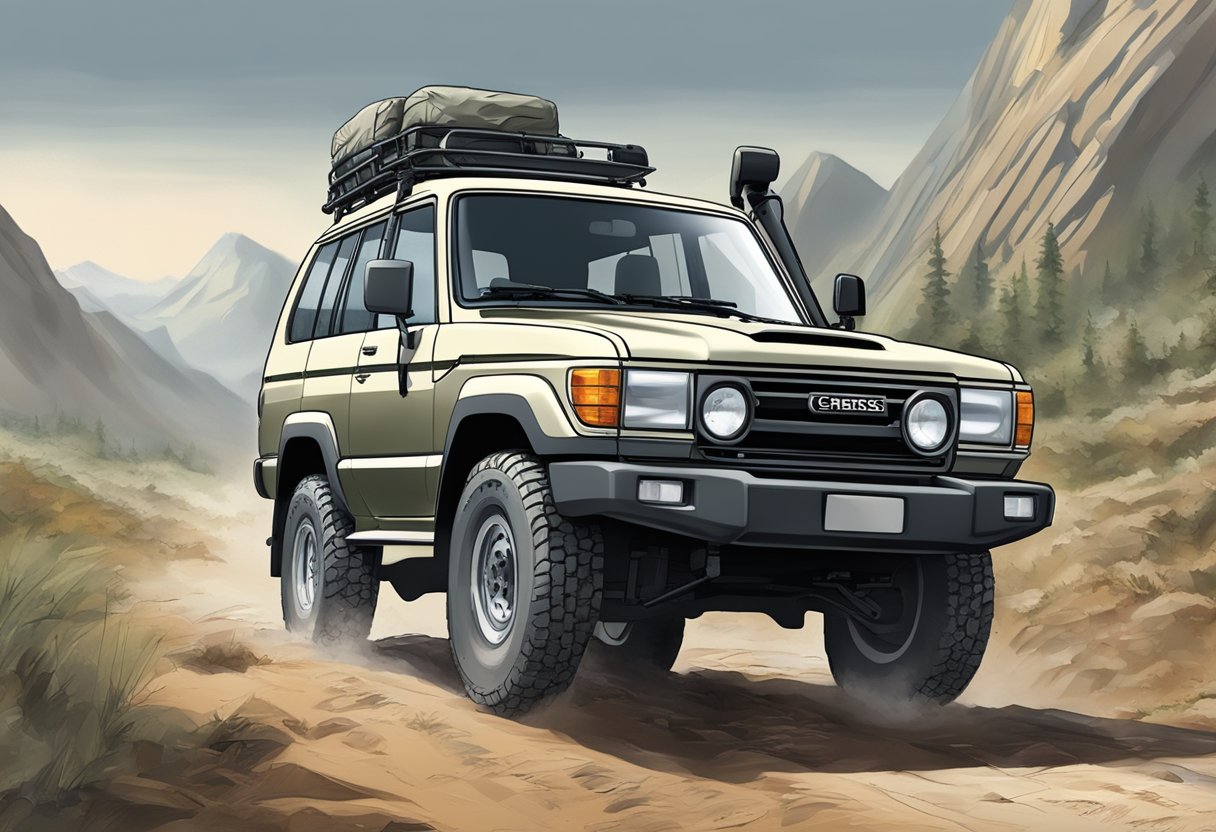*This post may contain affiliate links. As an Amazon Associate we earn from qualifying purchases.
When it comes to the legendary Land Cruiser 80 series, enthusiasts often engage in heated debates over which model year stands as the cream of the off-road crop. The 80 series, produced by Toyota from 1990 to 1997, has achieved a near-mythical status among 4×4 aficionados and adventure seekers alike. Its reputation for rugged durability, combined with classic styling, makes it a sought-after classic for those looking to traverse the path less traveled or simply make a statement at the local coffee shop parking lot.

Selecting the “best” year of the Land Cruiser 80 series can feel like trying to choose the finest vintage of wine while blindfolded. The subtle variations between model years can greatly influence performance, comfort, and the availability of sought-after features like electric lockers. For the off-road purist, the choice may boil down to mechanical simplicity and the ease of customization. Meanwhile, those seeking a balance of brawn and luxury might lean toward the later years, where refinement began to inch its way into the rugged world of the Land Cruiser.
Key Takeaways
- Debates are common around the top model year for the Land Cruiser 80 series.
- Factors like performance and features influence the choice of the best year.
- Later models strike a balance between off-road capability and comfort.
Picking the Prime Year
https://www.youtube.com/watch?v=1hR4x5m-xk4&embed=true
When one wades into the fanatical world of 80 Series enthusiasts, the debate around which year model reigns supreme can be as heated as a desert trail at high noon. But fear not! We shall march through the sands of time to pinpoint the creme de la creme of this legendary vehicle.
Legacy of the 80 Series
The 80 Series is the Bruce Willis of the Land Cruiser world—rugged, tough, and thrived in the ’90s. With a lifespan from 1990 to 1997, this powerhouse paddled its way through the most daring of adventures without as much as a hiccup. It’s the off-roading enthusiast’s dream, the collectible that everyone wants in their garage. Between the 1991 FJ80 with its introduction of full-time 4WD—a fancy feature at the time—and the later models complete with electric lockers, choosing the best year requires a map, a magnifying glass, and maybe a bit of luck.
Notable Mentions:
- 1991 FJ80: Full-time 4WD kicks off the era.
- 1997 FJ80: Last of its kind, with refinements galore.
Assessing the Vehicle’s Value
Now, evaluating an 80 Series Land Cruiser for one’s personal collection isn’t just about kicking tires and checking oil levels. These beasts are investments, holding their value like a kangaroo holds its ground against a rival. One must consider rarity, model upgrades, and availability of the iconic electric lockers. The later models tend to fetch a higher price, but for good reason—they often come with a little more razzle-dazzle, making them not only a reliable buddy for the trails but also a shinier penny in the bank.
Factors to Weigh:
- Reliability: How well has the year model stood the test of time?
- Upgrades: Were there any significant improvements that year?
- Investment Potential: Is the vehicle a gold mine waiting to be unearthed?
Gauging the golden year of the 80 Series is like finding the finest bottle of aged wine in a vast cellar. It takes patience, a discerning eye, and perhaps the ability to enjoy the quirks of these legendary machines. They say the 80 Series Land Cruiser doesn’t just travel roads—it chomps them down for breakfast. So choose wisely, intrepid traveler, your chariot awaits!
Mastering the Mechanics

The quest for the peak Land Cruiser experience can be quite the ride. It’s less about what you know, and more about the whirring of the engine, the smooth transition of gears, and that gloriously floaty feeling as you sail over bumps.
Engine Evolution
They say you can’t teach an old dog new tricks, but they’ve never met the 1FZ-FE engine of the Land Cruiser 80 Series, available from 1992 onwards. This inline-six was determined to prove its mettle, churning out enough horsepower to propel a small house. Compared to the earlier engines, the 1FZ-FE offered more power and was fuel-injected, bringing drivers into the modern age where “choke pulls” are spoken of only in hushed, respectful tones.
Transmission Talk
Land Cruisers came with the classic manual transmission for those who feel incomplete without a gear stick in their right hand. But as the world moved on to “easier” solutions, the automatic transmission rolled in. The automatics in the Land Cruiser 80 Series are like somebody put a hardworking ant in charge: relentless and surprisingly resourceful, unless you’re trying to pull off a dramatic movie chase scene.
- Manual: Gritty and raw, just like your grandad’s beard.
- Automatic: Smooth as a diplomat in a silk suit.
Suspension Saga
Once upon a time, leaf springs were the go-to for suspension setups, but by the time the Land Cruiser 80 Series rolled out, it was clear that coil springs were the preferred spring of choice for both front and back, offering a ride reminiscent of a magic carpet. The introduction of the coil springs and maintaining a solid front axle were akin to a fairy tale ending for those driven by a sense of adventure and a longing for comfort on their gallant steeds.
- Leaf Springs: Beloved by purists and masochists alike.
- Coil Springs: An upgrade as celebrated as the invention of sliced bread.
- Suspension Setup: Solid front axle with a locking rear differential, because what’s life without a little drama when you hit the rough patches?
Convenience or Combat? Inside Story

When one is torn between the upscale lure of a luxury SUV and the gritty determination of an off-road conqueror, the 80 Series Land Cruiser whispers, “Why not both?” Sit back as we explore the duality of its interior that caters equally to the boardroom executive and mud-splattered adventurer.
Luxury vs. Off-Road Capabilities
In a curious blend of refinery and robustness, the Land Cruiser 80 Series holds court. Imagine negotiating rocky terrains with the prowess of a mountain goat while encased in the comfort comparable to a rolling executive lounge. They equipped these mammoths with a full-time four-wheel-drive system that laughs in the face of gravity, alongside factory lockers for when the roads decide to play dirty.
Yet, for those who prefer their gloves to be of leather rather than workman’s, features like power windows, air conditioning, and at times an indulgence of air suspension, offer a nod to luxury. One must note that as the years progressed, the later models flirted with even finer features, such as adding ABS and traction control to its arsenal, transforming it from a mere vehicle into a veritable fortress on wheels.
Creature Comforts and Cool Features
The 80 Series may not have been born with a silver spoon in its exhaust pipe, but it certainly picked one up along the way. Early models will give a good ol’ fashioned manual experience, but as time ticked on, modern spoils like heated seats and touchscreen controls began to adorn its cabin.
They sized it right, too; occupants can enjoy the spacious interior without feeling like they’re in a barren steel cavern. Later iterations would even play around with airbags—for safety, not balloons—a much-welcomed party trick amidst the off-road rumble. And while one might not find an overabundance of USB ports or an eight-speed transmission in the elder 80 Series models, the journey towards such tech-laden decadence had certainly begun.
Remember, in a Land Cruiser 80, one never simply ‘drives to work’, but rather, embarks on a daily excursion of pomp and circumstance, or dust and daring—depending on which way the steering wheel turns.
Exterior Exam

When it comes to the exterior of the Toyota Land Cruiser 80 Series, one might reckon it’s built like a tank, but even tanks have their weak spots. In this thorough inspection, we’ll sift through the crusty issues of rust and decode the robust yet retro design of this legendary four-wheeler.
Rust Resilience
The 80 Series can be as stubborn as a mule when it comes to rust, particularly in places where salt graces the roads like an unwelcome seasoning. Key areas to watch include:
- Wheel arches
- Rear liftgate
- Undercarriage
Ensuring rust protection measures, such as regular undercoating treatments, can be the difference between owning a pristine classic and a tetanus-inducing relic. It’s not just the body panels; sneaky rust can also plague the roof rack mounts and any nook or cranny where moisture might throw a little unwanted rust party.
Decoding the Design
The design of the 80 Series might whisper ’90s louder than a Backstreet Boys reunion tour. Distinct traits include:
- Boxy silhouette – it’s hip to be square!
- Stout and sturdy spare tire placement, practical and ready for action, like a superhero’s shield.
Land Cruiser enthusiasts often debate the virtue of keeping the classic design versus throwing on enough aftermarket accessories to make it look like it raided an off-road outfitter’s clearance sale. Whether stock or modified, they all share that quintessential 80 Series charm – tough on the outside, ready for adventure, and unmistakably not trying to win any beauty contests.
